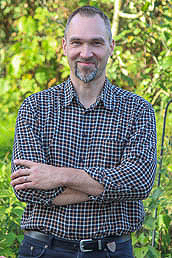
Jari Lyytimäki
Urban greening is often seen as an antidote to many problems caused by intensifying urbanisation. Green cities with parks and trees provide people with enjoyable everyday surrounding, improved air quality, less noise and better protection against heat waves and urban floods. Studies showing the value of different ecosystem services are piling up and so-called nature based solutions are promoted as a possible remedy for a wide variety of societal problems.
But not all green is nice and beautiful. Urban trees can be a source of harm and nuisance, labelled as ecosystem disservices. They include concerns such as allergens, pests, pathogens, insects and larger animals habituating urban parks, leaf litter and debris, unpleasant odours, falling branches or trunks, animal droppings, bites and noises and obscured views. Some people may also feel fear that crime or violence will take place in urban green areas. Tree roots can cause physical damage to infrastructure and plants growing near roads can decrease visibility and increase the risk for traffic accidents.
These ecosystem disservices must be recognised and managed in order to avoid unnecessary loss of human well-being. The task is not an easy one. To manage ecosystem disservices, you must first recognise them. Assessing disservices is at least as complicated as assessing ecosystem services.
Different disservices may be perceived as relevant depending on the knowledge base, attitudes and expectations of the people making the valuation. In some cases, concerns related to disservices may be amplified and exaggerated by the news media and social media debates. In turn, this may induce unwarranted critique and increase the risk of too hasty or misplaced management actions.
The more knowledge we have, the better we can remove the disservices without compromising the associated benefits. In some cases, the best option may be to learn to tolerate minor disservices that are inevitable by-products of the functioning ecosystems providing major benefits.
Felling the tree blocking the view from your window may not be the optimal solution. In such cases, straightforward management by chainsaw is likely to provide far too simple answer to a complicated problem. In other cases, removal and renewal of old or injured trees is a necessity even if trees are highly appreciated by the residents.
A balanced and comprehensive assessment of both ecosystem services and disservices provided by urban ecosystems is needed for successful urban green management. Open and fact-based discussion of both the benefits and nuisances is the best way to avoid unnecessary worries and to give the ecosystem the appreciation it really deserves.
Further information
Lyytimäki J. (2017). Disservices of urban trees. In: Ferrini F., Konijnendijk van den Bosch C. C. & Fini A. (Eds.). Routledge Handbook of Urban Forestry. Routledge, London and New York. Pp. 164-176.
Senior researcher Jari Lyytimäki is always looking on the bright side of life, despite his research interests towards the dark shades of green.
Tel. +358 295 525 1397
firstname.surname@ymparisto.fi
Please be advised that the opinions of blog contributors do not reflect the views and opinions of the Finnish Environment Institute.